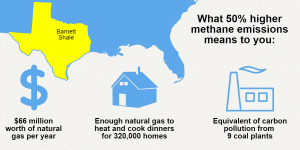 All around the country, we are seeing signs of innovation when it comes to the electricity industry. The state of New York is performing a comprehensive review of related technologies and business practices, Illinois is modernizing the electric grid and empowering customers to save energy by creating transparency around smart meter data, and the wind industry in Texas continues to set new records. The U.S. grid is truly beginning to evolve from the system Thomas Edison created 100 years ago, moving toward a more flexible grid that runs on clean, renewable resources.
All around the country, we are seeing signs of innovation when it comes to the electricity industry. The state of New York is performing a comprehensive review of related technologies and business practices, Illinois is modernizing the electric grid and empowering customers to save energy by creating transparency around smart meter data, and the wind industry in Texas continues to set new records. The U.S. grid is truly beginning to evolve from the system Thomas Edison created 100 years ago, moving toward a more flexible grid that runs on clean, renewable resources.
Yet some players – with significant revenue and power – are not on board. FirstEnergy, the Akron-based utility giant, has been clinging to the past and waging war on clean energy in Ohio, as I explain in my op-ed published today in the Akron Beacon Journal. The Beacon Journal is the hometown newspaper of FirstEnergy’s headquarters. Read More

 Methane emissions from vast oil and gas operations in the densely populated Barnett Shale region of Texas are 50 percent higher than estimates based on the Environmental Protection Agency’s (EPA) greenhouse gas inventory, according to a series of 11 new papers published
Methane emissions from vast oil and gas operations in the densely populated Barnett Shale region of Texas are 50 percent higher than estimates based on the Environmental Protection Agency’s (EPA) greenhouse gas inventory, according to a series of 11 new papers published 
 Last Friday, the incoming head of the International Energy Agency (IEA), Faith Birol, provided a briefing to U.S. stakeholders about IEA’s new special report on climate change, which found that
Last Friday, the incoming head of the International Energy Agency (IEA), Faith Birol, provided a briefing to U.S. stakeholders about IEA’s new special report on climate change, which found that  California public school teachers. Religious charities. New York police officers and firefighters.
California public school teachers. Religious charities. New York police officers and firefighters.